Ice On Evaporator Coil Refrigerator: Causes and Fixes
We may earn affiliate fees for purchases using our links (at no additional cost to you).
Is your refrigerator struggling to keep your food cool? Are you noticing a layer of ice forming on the evaporator coil? Don’t worry, you’re not alone.
Ice buildup on the evaporator coil of a refrigerator can be a common issue, but it’s important to understand why it happens and how it affects the performance of your appliance.
In this article, we’ll explore the causes of ice formation, the risks associated with it, and provide practical tips on how to tackle this problem effectively.
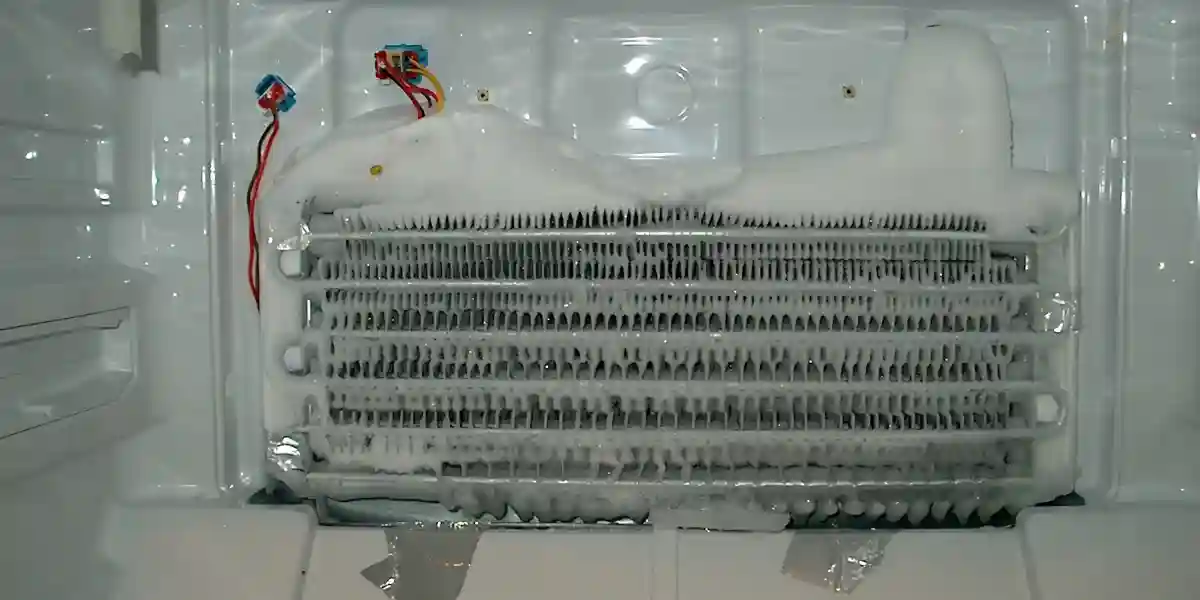
Ice on evaporator coil refrigerator
Ice on the evaporator coil of a refrigerator is a common issue caused by factors such as poor airflow or a malfunctioning defrost system.
It can lead to reduced cooling efficiency and potential damage to the appliance.
What Causes Ice Buildup on the Evaporator Coil of a Refrigerator?
By addressing these various causes of ice buildup on the evaporator coil, you can ensure optimal refrigerator performance, prevent unnecessary repairs, and extend the lifespan of your appliance:
Insufficient Airflow
When your refrigerator’s evaporator coil doesn’t receive enough airflow, it can lead to ice buildup.
This can occur due to blocked vents or obstructed airflow caused by items placed too closely to the coil.
To prevent this, ensure there is ample space around the coil for air circulation. Regularly check and clear any blockages that may impede proper airflow.
Malfunctioning Defrost System
A faulty defrost system can also contribute to ice formation on the evaporator coil.
If the defrost system fails to activate or operates inadequately, ice can accumulate over time.
To address this issue, inspect the defrost thermostat, timer, and heater to ensure they are functioning correctly.
Replace any faulty components and regularly maintain the defrost system to prevent ice buildup.
Warm Ambient Temperature
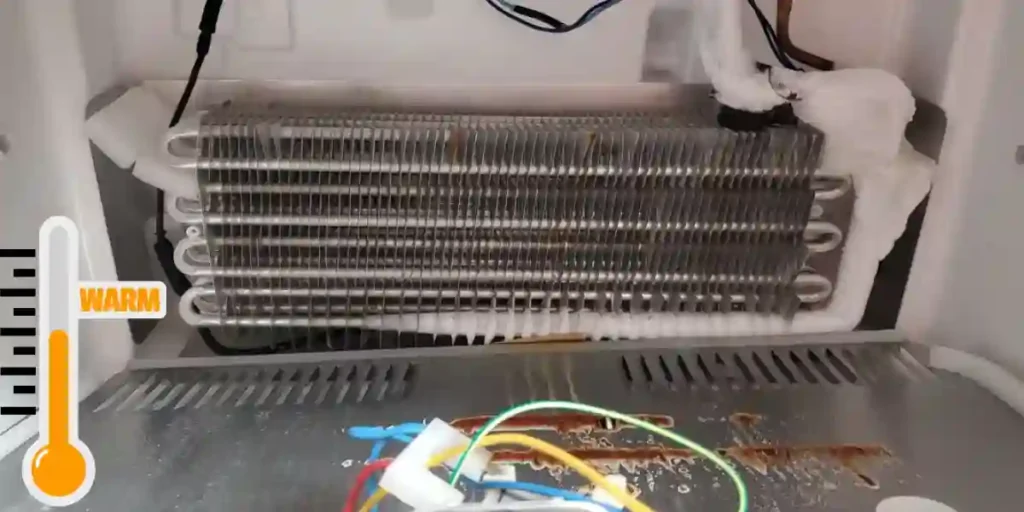
High ambient temperatures can lead to ice formation on the evaporator coil. When the surrounding air is warmer than the desired refrigerator temperature, excess moisture can freeze on the coil.
To mitigate this, ensure the refrigerator is placed in a cool area away from direct sunlight and other heat sources.
Additionally, check that the door seals are intact to prevent warm air infiltration.
Excessive Humidity
Excessive humidity in the refrigerator’s environment can contribute to ice buildup on the evaporator coil.
When the air inside the refrigerator contains high levels of moisture, it can condense and freeze on the coil.
To address this, consider using a dehumidifier in the vicinity of the refrigerator or store food items in sealed containers to reduce moisture levels.
Improper Usage or Settings
Inadequate usage or incorrect settings can also lead to ice formation on the evaporator coil.
Opening the refrigerator door frequently or for extended periods can introduce warm air, causing moisture to accumulate and freeze on the coil.
Ensure the refrigerator door is closed properly and avoid unnecessary openings. Additionally, check that the temperature settings are appropriate for efficient cooling.
Faulty Door Seals
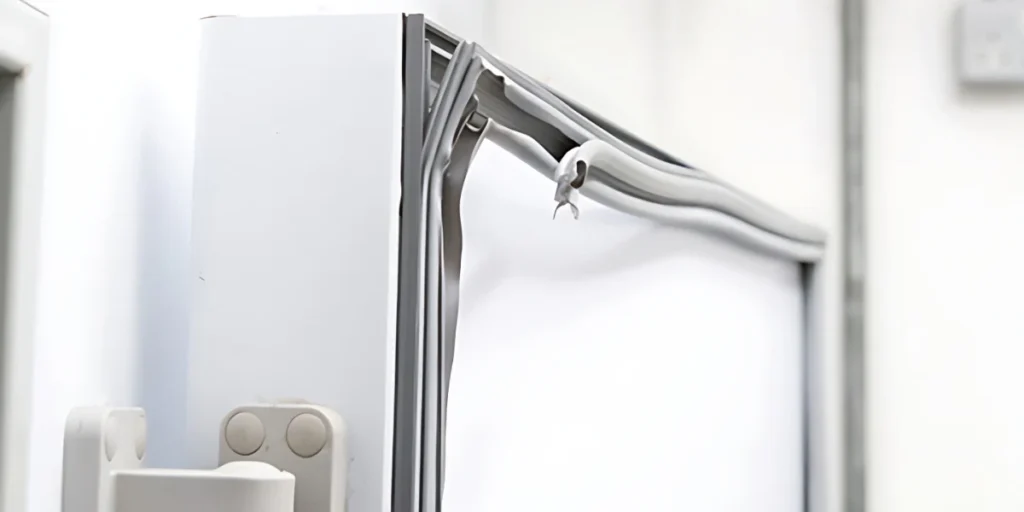
Damaged or worn-out door seals can allow warm air from the surroundings to enter the refrigerator, leading to ice formation on the evaporator coil.
Inspect the door seals regularly for cracks, gaps, or tears. Replace any faulty seals to ensure a tight seal and prevent warm air infiltration.
Refrigerant Issues
Refrigerant leaks or improper refrigerant levels can impact the cooling process and contribute to ice buildup on the evaporator coil.
If you suspect a refrigerant issue, it’s best to consult a professional technician to identify and resolve the problem.
They can assess the refrigerant levels and repair any leaks to restore optimal cooling performance.
Dirty Evaporator Coil
A dirty or dusty evaporator coil can impede heat transfer and cause ice to form.
Regularly clean the coil using a soft brush or vacuum cleaner to remove accumulated dirt and debris.
This helps maintain efficient heat exchange and prevents ice buildup.
Damaged Fan Motor
A malfunctioning fan motor can disrupt proper airflow, leading to ice accumulation on the evaporator coil.
Check the fan motor for any damage or signs of malfunction. If necessary, replace the fan motor to ensure sufficient airflow and prevent ice formation.
Electrical Issues
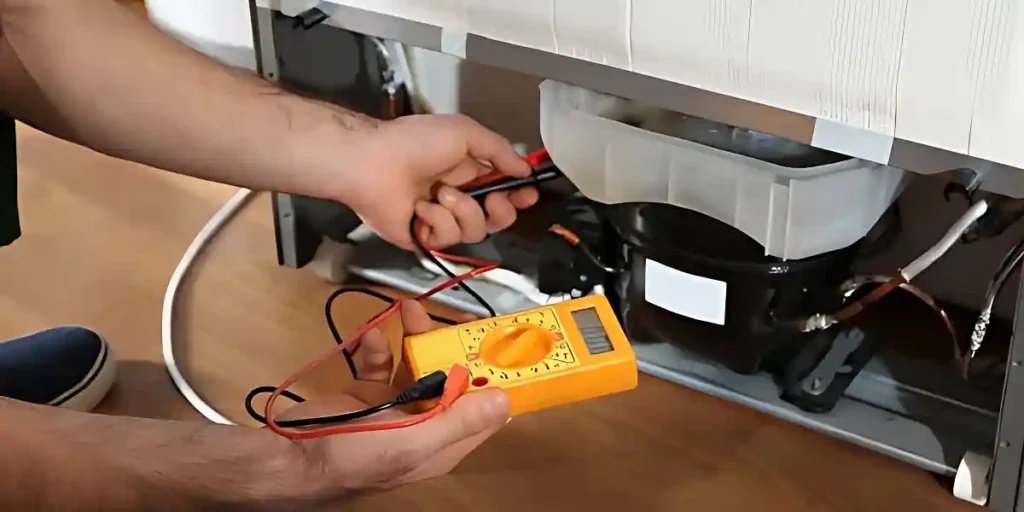
Electrical problems within the refrigerator’s components, such as faulty sensors or wiring, can affect the defrost cycle and lead to ice buildup on the evaporator coil.
If you suspect electrical issues, it’s crucial to have a qualified technician inspect and repair the electrical system to prevent ice formation.
Common Symptoms of Ice Formation on the Evaporator Coil
Reduced Cooling Efficiency
When ice starts to form on the evaporator coil of your refrigerator, you may notice a decline in its cooling performance.
The refrigerator may struggle to maintain the desired temperature, resulting in food not being adequately chilled.
You might observe that perishable items spoil faster, and ice cream or other frozen goods may not remain properly frozen.
If you experience a noticeable decrease in cooling efficiency, it could be a sign of ice buildup on the evaporator coil.
Water Leakage Inside the Refrigerator
Ice formation on the evaporator coil can cause excess moisture to accumulate.
As the ice melts during the defrost cycle, water may not drain properly, leading to leakage inside the refrigerator.
You might notice pools of water on the shelves or in the crisper drawers. Water leakage can damage your food and cause mold or mildew growth if left unaddressed.
Unusual Noises Coming from the Refrigerator
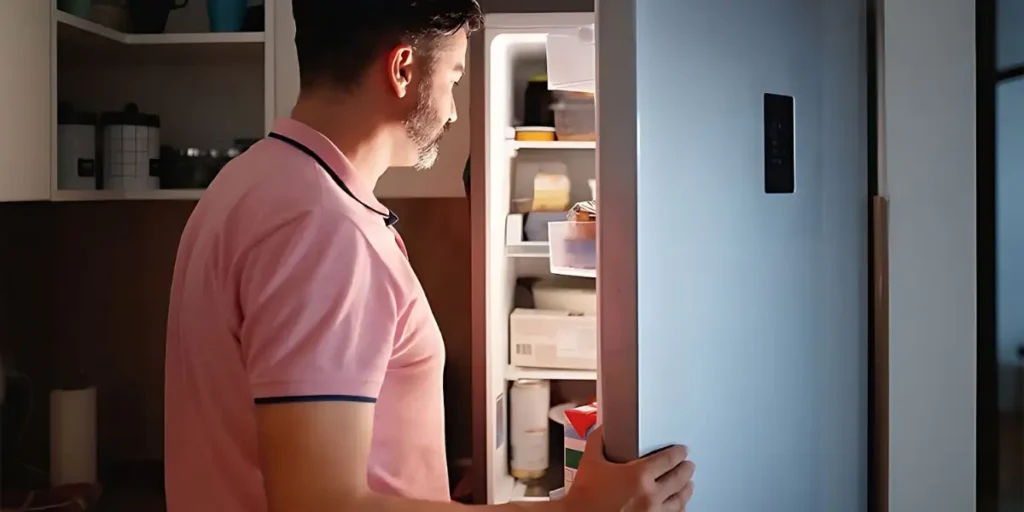
As ice builds up on the evaporator coil, it can cause airflow obstruction, resulting in unusual noises emanating from the refrigerator.
You may hear rattling, buzzing, or hissing sounds that are not typical during normal operation.
These noises indicate that the cooling system is working harder than it should due to the presence of ice on the evaporator coil.
Frequent Cycling of the Compressor
Ice formation on the evaporator coil can lead to the refrigerator’s compressor cycling more frequently than usual.
The compressor is responsible for cooling the refrigerant, and if ice blocks the coil, the compressor needs to work harder to achieve the desired temperature.
This increased workload can cause the compressor to cycle on and off more frequently, resulting in higher energy consumption.
Frosted or Icy Buildup in the Freezer Compartment
One of the visible signs of ice formation on the evaporator coil is the presence of frost or ice buildup in the freezer compartment.
You may notice a layer of ice forming on the walls or shelves of the freezer.
The presence of frost or ice that persists even after manual defrosting indicates a potential problem with ice accumulation on the evaporator coil.
Inconsistent Temperature throughout the Refrigerator
Ice buildup on the evaporator coil can disrupt the proper distribution of cold air throughout the refrigerator.
As a result, you may experience inconsistent temperatures in different areas of the appliance.
Certain sections may feel warmer than others, while some food items may freeze or become partially frozen due to uneven cooling.
If you observe temperature variations within the refrigerator, it could be indicative of ice formation on the evaporator coil.
Excessive Condensation on Food and Containers
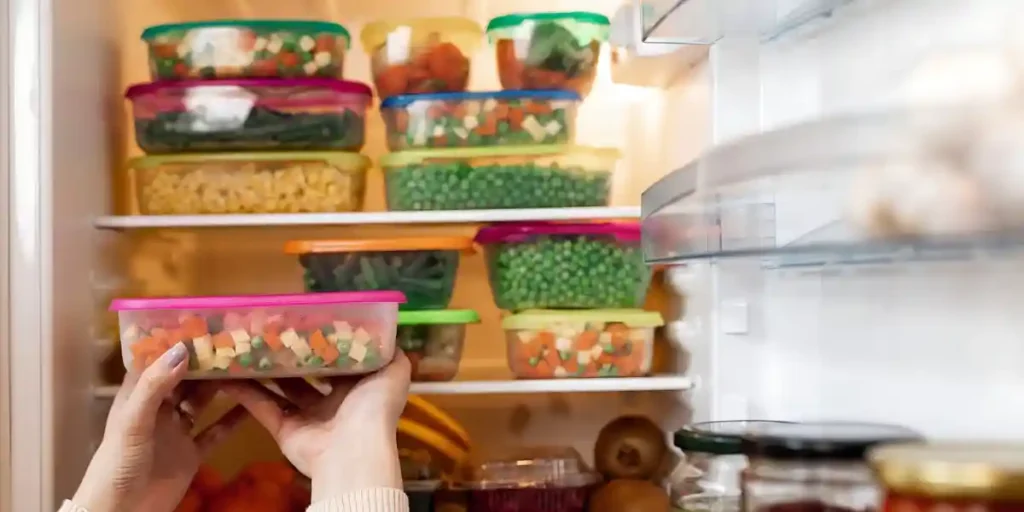
When ice forms on the evaporator coil, excess moisture can be released into the refrigerator compartment.
This can lead to increased condensation on food items and containers.
You may notice water droplets forming on the surface of fruits, vegetables, or packaged goods.
Excessive condensation can promote bacterial growth and spoilage, impacting the freshness and quality of your food.
Ice or Frost on the Rear Panel of the Freezer
A clear indication of ice formation on the evaporator coil is the presence of ice or frost on the rear panel of the freezer.
If you open the freezer compartment and see a layer of ice covering the back panel, it suggests that the coil is not defrosting properly, leading to ice buildup.
It’s important to address this issue promptly to prevent further ice accumulation and restore optimal cooling performance.
How to Remove Ice from the Evaporator Coil: Step-by-Step Guide?
Gather the Necessary Tools and Materials
To successfully remove ice from the evaporator coil, you’ll need a few tools and materials. Gather the following items before you begin:
- Safety gloves
- Safety goggles
- Hairdryer or heat gun
- Towels or absorbent cloths
- Plastic scraper or spatula (non-metallic)
- Bucket or container to collect melted ice
Turn Off the Refrigerator
Before starting the ice removal process, ensure that you turn off the refrigerator and unplug it from the power source.
This step is crucial for your safety and prevents any electrical hazards during the procedure.
Defrost the Freezer Compartment
Open the freezer compartment and remove all the food items. Place them in a cooler or insulated bag to keep them chilled while you work. Leave the freezer door open to allow the ice to start melting.
Melt the Ice Using a Hairdryer or Heat Gun
Put on your safety gloves and goggles for protection. Start melting the ice on the evaporator coil by directing the hot air from a hairdryer or heat gun onto the ice.
Move the hairdryer or heat gun in a back-and-forth motion across the coil, focusing on one area at a time. Be cautious not to get too close to the coil to avoid damaging it.
Remove the Melted Ice
As the ice begins to melt, it will drip and collect in the freezer compartment.
Use towels or absorbent cloths to soak up the melted ice and prevent it from spreading. Place a bucket or container underneath to catch any dripping water.
Gently Scrape Away Remaining Ice
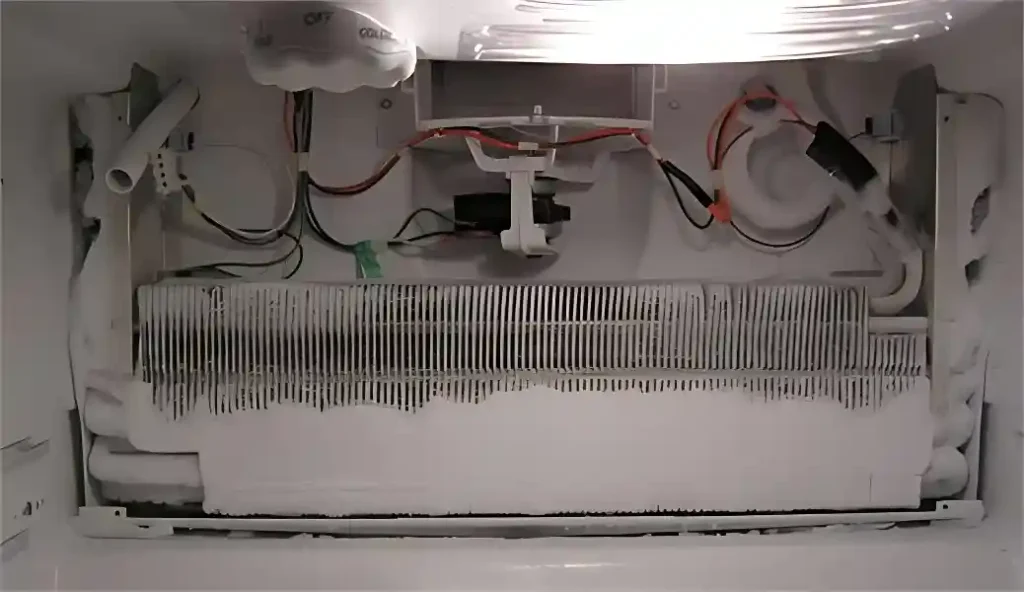
Once most of the ice has melted, use a plastic scraper or spatula to gently remove any remaining ice from the evaporator coil.
Be careful not to apply excessive force or use a metallic object that could damage the coil’s delicate fins.
Clean and Dry the Evaporator Coil
After removing the ice, clean the evaporator coil to ensure optimal performance.
Use a soft cloth or brush to gently wipe away any dirt or debris that may have accumulated. Make sure the coil is completely dry before proceeding.
Reassemble and Power On the Refrigerator
Once the evaporator coil is clean and dry, reassemble the freezer compartment by placing the food items back inside.
Close the freezer door and plug the refrigerator back into the power source. Turn on the refrigerator, allowing it to resume normal operation.
FAQs
1. How Does Ice Buildup On The Evaporator Coil Affect The Refrigerator’s Cooling Efficiency?
This can result in higher energy consumption, inadequate cooling, and potential food spoilage.
2. What Are The Risks Of Leaving Ice On The Evaporator Coil Unaddressed?
3. Can I Remove Ice From The Evaporator Coil Myself?
If you’re unsure or uncomfortable, it’s advisable to seek professional assistance.
4. How Can I Prevent Ice Buildup On The Evaporator Coil?
Regularly maintain the defrost system, check for and repair any leaks, and monitor temperature settings. Avoid frequent and prolonged door openings to minimize warm air infiltration.
5. Should I Be Concerned If I Notice Ice Forming On The Evaporator Coil?
Regularly monitoring and addressing ice buildup can help prevent any adverse effects on cooling efficiency and the overall performance of the refrigerator.
Conclusion
Don’t let ice on the evaporator coil of your refrigerator leave you in a chilling situation.
Addressing this issue promptly is crucial to maintain optimal cooling efficiency and prevent potential risks such as reduced performance, water leakage, and increased energy consumption.
By understanding the causes, symptoms, and preventive measures, you can ensure your refrigerator stays frost-free, your food stays fresh, and you enjoy reliable cooling year-round.
Keep your cool and take proactive steps to tackle ice buildup on your evaporator coil.
